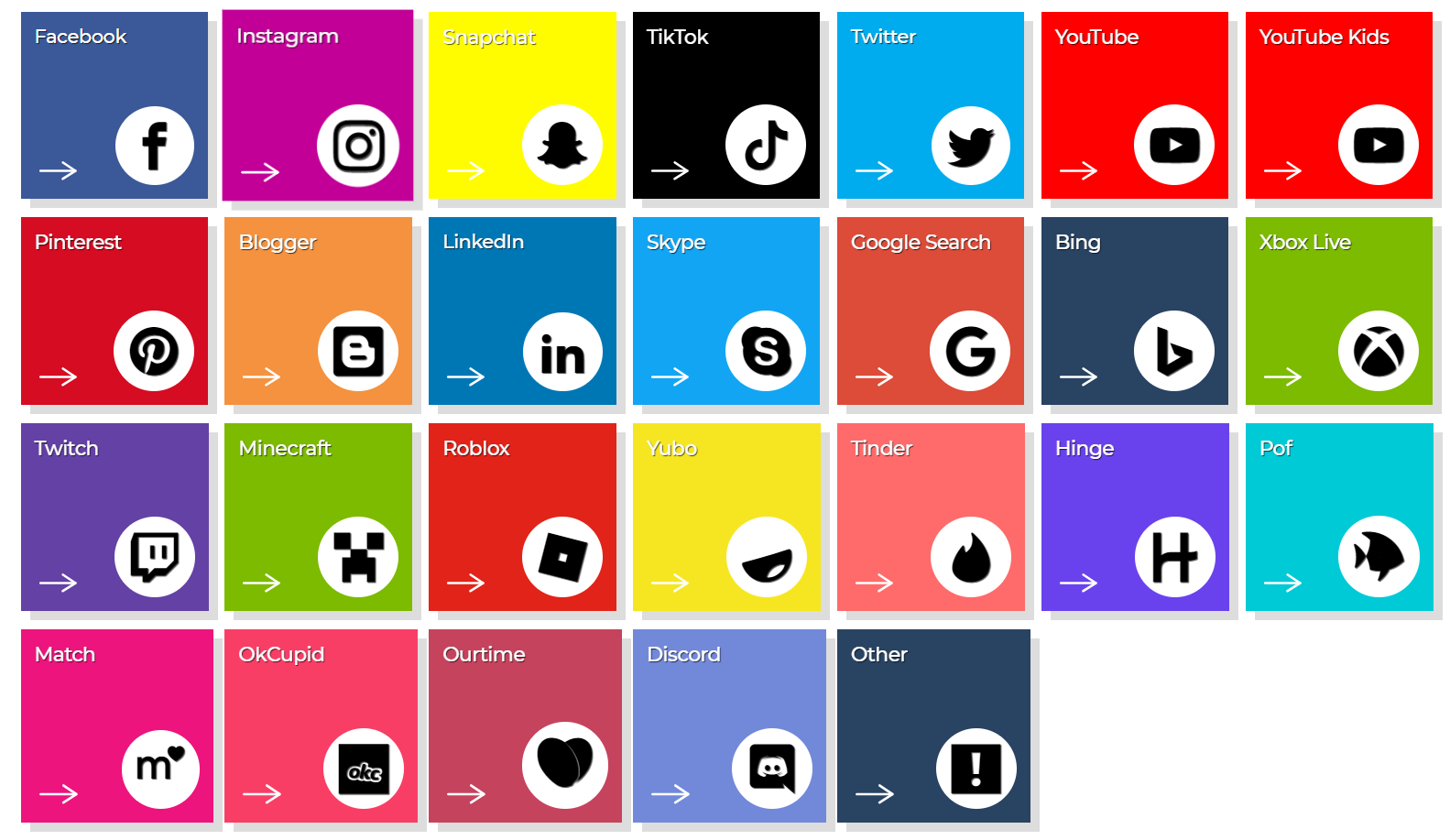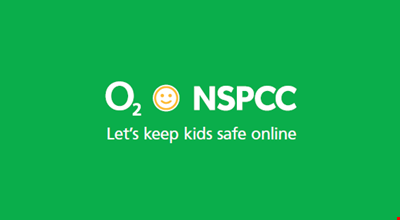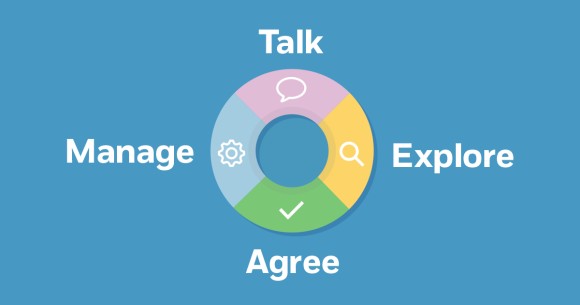Online Safety - Key Stages 3&4

Reporting Harmful Content
Where is the content posted?
Before you submit a report to us, it is essential that you have reported the material to the social media service directly using their online tools, at least 48 hours ago. You can find information on how to do this by clicking on the image below.
It is also important to remember that we can only submit reports on specific platforms, about the following 8 harms:
- Threats
- Impersonation
- Bullying & Harassment
- Self-harm or Suicide
- Online Abuse
- Violent Content
- Unwanted Sexual Advances
- Pornographic Content
Tik Tok Safety
Child safety on TikTok: parent factsheet - Guidance about concerns on Tik Tok for parents.
 Do you know what your children are doing online this summer?
Do you know what your children are doing online this summer?
- Chat regularly with your child about what they do online and get them to show you. Get to know about new technologies and trends. Talk about the potential negatives, like oversharing, seeing inappropriate content, cyberbullying, stranger danger, uncontrolled spending of money and spending too much time online. Set a good example yourself.
- Steer your child towards safe searching, websites and apps. Check what they’re watching and/or sharing on streaming sites like YouTube and TikTok. Encourage them to use child-friendly platforms like YouTube Kids.
- Gaming, social media, picture/video sharing and many other apps and websites have lower age limits for a reason, so you should make sure your child doesn’t access those for which they’re underage.
- Download apps only from recognised sources like App Store and Google Play. Add your own email address when setting up accounts and apps for your child.
- Discuss and agree boundaries and rules from a young age, including appropriate online usage, always being respectful and how much time they spend online. Empower them, but remember they don’t have the experience or maturity to always make the right decisions.
- Consider setting up parental control software and apps on computers, mobile devices and games consoles, privacy features on social networking sites, safety options on search engines and safe location settings on devices and apps. Turn on your ISP’s family filters.
- Stay familiar with new game and social media trends, especially those attracting negative publicity because they may be violent, encourage gambling or leave the way open for messaging random strangers, enabling hence potential grooming or other types of coercion.
- For video calls, ensure your child’s safety by updating to the platform’s latest version, following its safety advice and checking that call invitations and replies can’t be seen by anybody outside the agreed call group.
- Online gaming is widely recognised as having many developmental benefits for young people, but talk to them about potential negatives like chatting to strangers, in-game purchases (like loot boxes, skins and cheats), and overdoing screen time.
- Talk to your child about misinformation, disinformation and fake news. Tell them not to believe or share everything they see or read, especially in these days of sponsored ‘news’ and AI-generated images, videos and text.
- Warn your child about confidential information, personal details and images/video about themselves or others they share in posts, profiles, messages and chats. Consider what you share yourself.
- Without being controlling, keep an eye on your child’s online activities and know how to recognise the signs of something not being right. For example, criminals have exploited increased online use for recruiting children into illegal activities such as cybercrime and drug muling.
For more information, click here
Safer Internet Day - 7th February 2023
UK Safer Internet Centre has produced new free resources, lesson plans, and videos for Safer Internet Day - 7th February 2023.
Find out more about Safer Internet Day here
View the teaching resources here
'Not Just Flirting'
From the PSHE Organisation - Cutting edge research and materials on some of the biggest issues facing young people today: see our ‘Not just flirting’ KS3-4 lesson plans on nude image sharing, and stay tuned for primary lessons on this topic coming soon.
Not just flirting - Teachers Guidance
Activity Sheet: Curate Your Feed: Making Social Media work for your Mental Health
Look At Me - Teens,sexting and risks
A glimpse of digital relationships today for young people.This briefing paper - part of a series from
The Cybersurvey - details both who shares nudes and why. It goes on to explore an ecology of related risks sharers encounter. Drawn from an anonymous sample of young people in schools across the country, here is a profile of life today as a young person. For some teens, technology enables and facilitates relationships without harm,but others suffer intensely. This complexity is a challenge when teaching online safety. It should be taught alongside healthy relationships and issues of consent. Emotional health needs drive some teens to overshare, posting images of all types as they seek to be liked, admired or to escape from loneliness. Others tend to take risks online. Sadly, for both, oversharing and signs of neediness are quickly exploited by others.
Download the full publication here
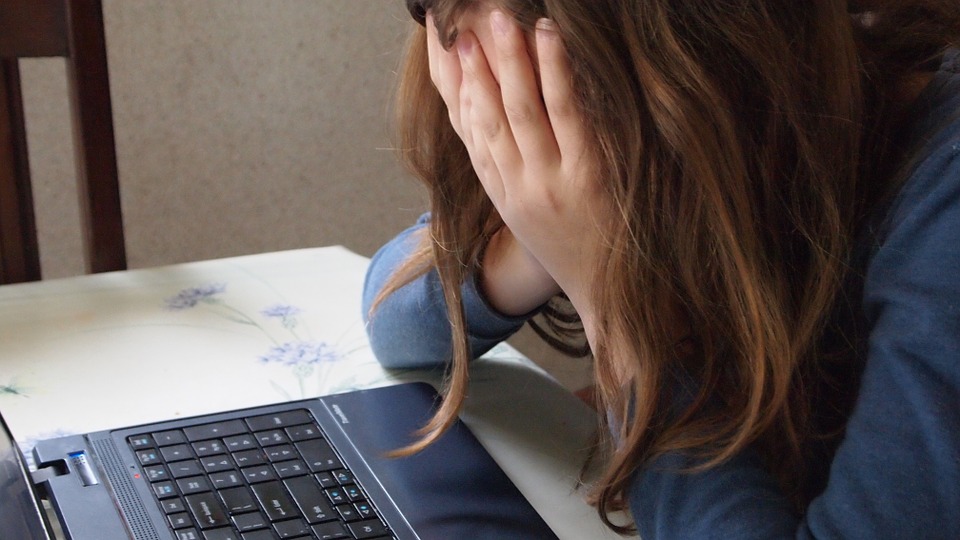 Cyberbullying: Understand, Prevent and Respond - Childnet International.
Cyberbullying: Understand, Prevent and Respond - Childnet International.
Research reveals that it has increased to affect 12% of young people in this country. This guidance is designed to support schools in preventing and responding to cyberbullying. The guidance comprises of four main sections:
- Understanding cyberbullying
- Preventing cyberbullying
- Responding to cyberbullying
- Supporting school staff
Click on the link or logo above for more information.
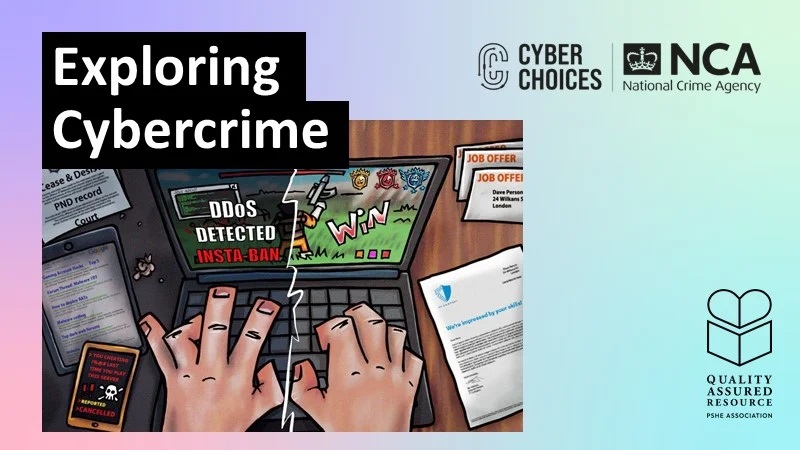 Exploring Cybercrime
Exploring Cybercrime
The PSHE Association have worked with the National Crime Agency (NCA) to update their 'Exploring Cybercrime' lesson pack for key stage 3.
Cybercrime is one of the fastest rising crimes in the UK, and is particularly common among young people, with many becoming involved before the age of 16. These lessons will help students explore the reasons why young people may engage in criminal activity online, and educate them about the risks of cybercrime and its impact on both individuals and the wider community.
Download the free lesson pack to access:
- two key stage three lesson plans available as both PowerPoint and PDF files
- accompanying teacher guidance with extensive notes on technological terms and frequently asked questions, as well as links to our Programme of Study and the statutory RSHE guidance
- pupil resources and activities for each lesson plan with enhanced, print-friendly design
Download Here
Crossing the line: PSHE toolkit
A Practical online safety PSHE toolkit with films and lesson plans to explore online issues with pupils ages 11-14 years old. A PSHE Association Quality-Assured Resource from Childnet International. Click on the logo for more.
Lesson Plan on Sexting
This lesson and accompanying film explores the issue of 'sexting'. Through the toolkit activities, students will understand the pressures on young people to take and share sexts and learn about the consequences of doing so; exploring when actions have crossed the line. In addition to this there is clear signposting and advice on the law in relation to sexting and support in dealing with the pressure to send a sext. CLICK ON THE IMAGE ABOVE TO ACCESS THESE RESOURCES.
NSPCC - Be Share Aware
It can be hard to keep track of what your child is doing on social networks, apps and games. Or know how to keep them safe. That's why we've teamed up with O2. Together we're helping parents untangle the web. And teach their children to be Share Aware. Because, just like in real life, kids need your help to stay safe online. Click on the link above or the logo below for more resources.
Talk, Explore, Agree, Manage - 4 Simple Steps to Staying Safe Online
CLICK ON THE LOGO FOR MORE INFORMATION
NSPCC - Pokémon Go: A Parent's Guide
Pokémon Go is a game where you collect and trade cute creatures called Pokémon (Pocket Monsters). There are loads of good things about the game, and there's a reason it's become so popular. But it's important to learn the risks involved:
- Meeting people they don't know face-to-face
- There's a physical risk
- It can cost a lot of money
- Access to personal data
Respect Yourself > Sex > Sexting:
What is it?
“Sexting” is a term commonly used to describe the use of technology to share personal sexual content.
This can be anything from naughty texts, pictures involving partial nudity right up to full sexual images or video. Usually it’s done as a method of flirting between partners (or potential partners), but can also be between groups and can use a whole range of devices, technologies and online spaces. However, the most common ones are mobile phone MMS, Skype and social network sites where images can be posted and shared (eg. Facebook, Twitter, Tumblr, Flickr, YouTube etc).
Respect Yourself > Sex: Attitudes to sex
Do you remember the easy days – the days before you worried about sex?
Sex wasn’t even on your radar – the days before you worried about whom you fancied and who fancied you. Then suddenly everything changed and it was like someone flicked a switch and sex was everywhere you looked.
Sex can mean many different things to different people, but one thing sex isn’t ever – is simple.
Sextortion
Sextortion is a crime rapidly on the increase.
Also known as ‘webcam blackmail’, it refers to criminals deceiving webcam users into unclothing and performing sexual acts.
This footage is recorded and then used to blackmail victims for money.
It is an international, organised crime, making it difficult for the police to capture the criminals responsible.
Click here to view the PowerPoint
Click here to view the Lesson Plan template
NSPCC 'Making sense of relationships' lesson plans launched
The free pack includes three lessons to support transition and changing friendships at key stage 2 and six lessons exploring healthy and unhealthy relationships at key stage 3. The three lessons at key stage 4 address issues such as abusive behaviour in relationships and pornography.Other themes explored include consent, challenging gender stereotypes, relationship values and much more. An accompanying Teacher Guide outlines how to plan the lessons into your PSHE curriculum and provides advice on safeguarding your pupils, signposting to additional support and communicating with parents about lesson aims and content.
Jenny Barksfield, PSHE Association Deputy CEO, said: “We were delighted to work in partnership with the NSPCC on the ‘Making sense of relationships’ resources. Relationships and sex education is a core strand of PSHE, so our national member network will greatly value using these quality assured resources to cover some of the most pressing issues facing children and young people today”
Craig Thorley, NSPCC’s policy manager, said: “Relationships and sex education is a vital tool to support children as they navigate the everyday challenges that come with growing up, and that needs to start at primary school by learning about online friendships and staying safe. We need it to help today’s children make sense of healthy relationships in an online world, as part of a wider PSHE curriculum.”
Digital Romance research
What is it?
This research project looks at how young people use technology in developing romantic relationships and surviving break ups. The project was led by Brook, the UK’s leading sexual health and wellbeing charity for under 25s, and the CEOP Command of the NCA. The research took place between January and May 2017 and used a mixed methods approach, including an online survey, in-person focus groups and one-to-one interviews.
What the report covers
It looks at how digital technology is used in young people’s sexual and romantic relationship practices, including:
- Flirting
- Sending nude or sexual images
- Communicating in relationships
- Control, pressure and abuse in relationships
- Breaking up and the post break-up period
You will also find a summary of young people’s views on current and future education and support strategies. Consider these findings when reviewing and developing PSHE and related education.
Who should read it
All professionals working with young people, particularly those working in an education setting. Consider these findings when developing strategies to support and enable young people to have positive and safe relationships online and offline.
Where to find it
Download the report here.
New ‘Online blackmail’ resource from NCA-CEOP gains our Quality Mark
We have granted our Quality Mark to ‘Online blackmail’ — a new resource pack from NCA-CEOP designed to support 15-18 year olds to identify and discuss online blackmail in a safe environment.
‘Online blackmail’ is free-to-access and aims to support young people to recognise key characteristics of how blackmail manifests online, including early signs of manipulative, pressurising and threatening behaviour. It also explores the potential impact of online blackmail and provides sources of further support for those who experience it.
The pack includes a lesson plan, worksheets and slides to support delivery. Note that ‘Online blackmail’ is not designed for home learning, but will support you when planning the RSE aspects of your PSHE education curriculum for September.
Download ‘Online blackmail’ from the Thinkuknow website
Case Studies
Murder Games: The Life and Death of Breck Bednar
This resource tells the true story of a 14 year old schoolboy who was lured to his death after being groomed online by Lewis Daynes. Breck's young gaming friends tell his story - a tale of manipulation and deceit engulfed, and sent shockwaves through the gaming community.
- Teachers' Background Notes
- Spotting the Signs - Student Notes
- Spotting the Signs - Teacher Notes
- Am I Safe Online? - Student Notes
- Am I Safe Online? - Teacher Notes
The dangers of Sexting
UK Council for Children Internet Safety (UKCCIS) - Sexting in schools and colleges - Responding to incidents and safeguarding young people (pdf)
Social Impact
How Using Social Media Affects Teenagers - Learn the impact of social media on youth. Experts say kids are growing up with more anxiety and less self-esteem.
Webcam Blackmail
Presentation highlighting issue of Webcam Blackmail - Refers to a form of blackmail in which sexual information or images are used to extort sexual favours from the victim. Social media and text messages are often the source of the sexual material and the threatened means of sharing it with others.
Please click here to download your copy of the presentation
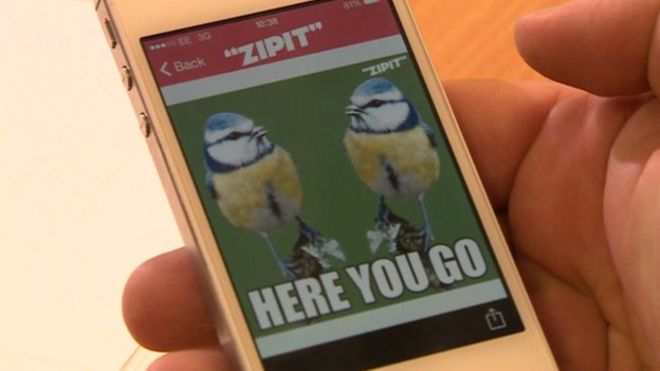
Zipit
What's the problem? - A guide for parents of children and young people who have got in trouble online. Click on the link to be taken to the Family resource page, then click on Online Safety.
Zipit App from Childline - If people are pressured into sending pictures of themselves this app provides a number of humorous pictures sending a clear message to the requester.
Social media and young people’s mental health and wellbeing
RSPH and the Young Health Movement have published a new report, #StatusOfMind, examining the positive and negative effects of social media on young people’s health.
The report includes a league table of social media platforms according to their impact on young people’s mental health. YouTube tops the table as the most positive with Instagram and Snapchat coming out as the most detrimental to young people’s mental health and wellbeing.
Click on the image to access the website and further resources.
UK Safer Internet Centre 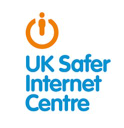
UK Safer Internet Centre is a partnership of three leading charities, Childnet International, Internet Watch Foundation and SWGfL, with a mission to make the internet a better place for children and young people. It coordinates Safer Internet Day across the UK and provides support with online safety issues via a helpline to professionals working with children and young people. The centre has produced a range of education packs covering all year groups to help schools promote internet safety.
https://educateagainsthate.com/resources/uk-safer-internet-centre/
Staying Safe Online
Practical strategies to best support all children and young people online, including those who identify as LGBT
Home Learning Lesson - Sharing information safely online
This PowerPoint is a home learning lesson on sharing information safely online. Click here to view the PowerPoint.
On older browsers you may have to right click on link, open the PowerPoint in new tab and click save to open.
Click here to view the Sharing Information Safely Online worksheets. April 2020
Unwanted Prisoner Contact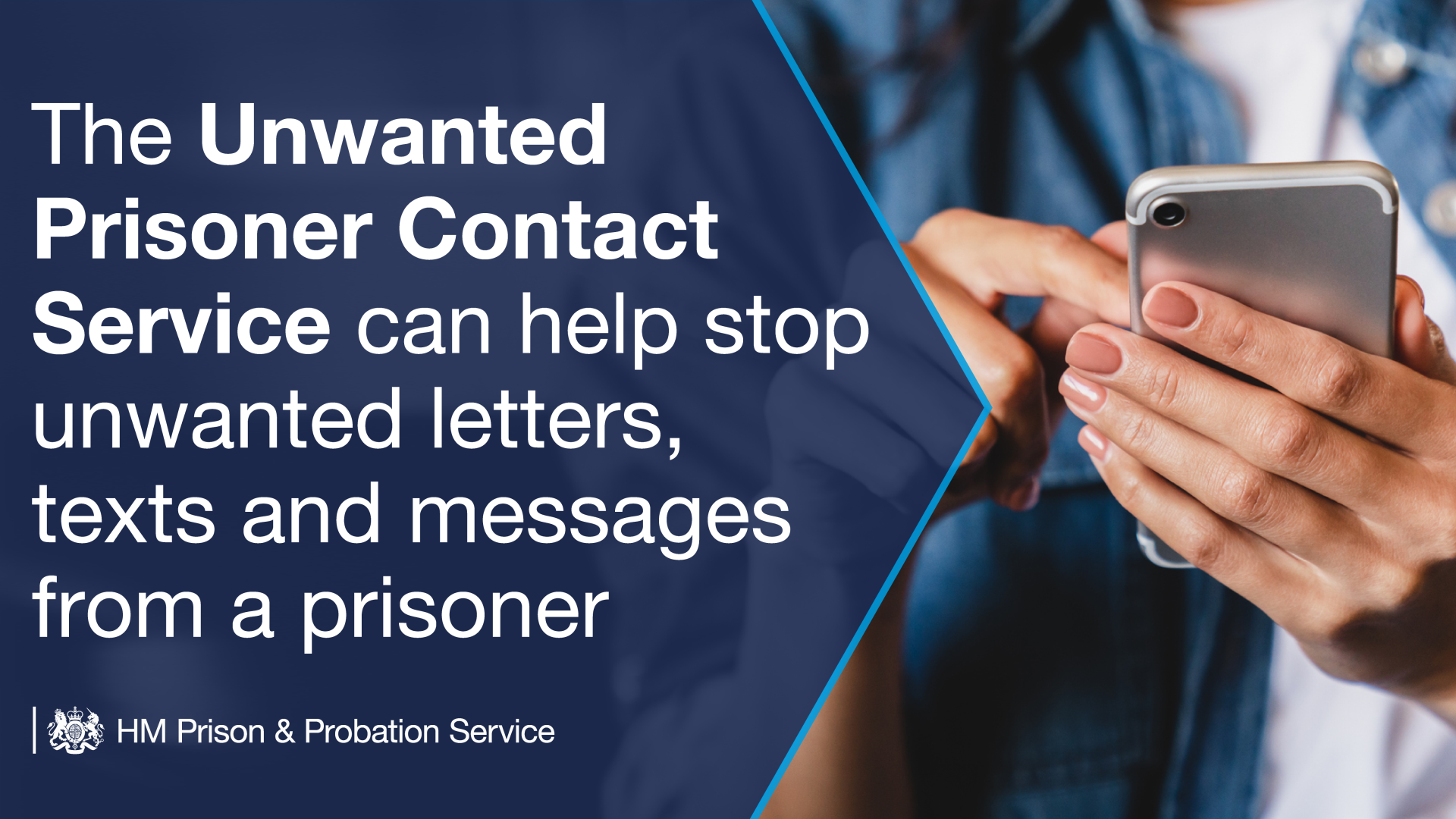
The Unwanted Prisoner Contact (formerly Victims Helpline) is a national service that prevents victims including survivors of domestic abuse, or any member of the public, receiving unwanted contact from prisoners.
It is a hugely important service. It protects victims and witnesses from unwanted contact. This is especially important if the victim is vulnerable or subject to controlling or coercive behaviour, exploitation, harassment, or intimidation. Preventing contact is critical in stopping further harm or trauma, maintaining confidence, and supporting prosecutions.
Unwanted prisoner contact briefing sheet
Connect: developing online independence and safer connections
Connect is a CEOP Education resource for children and young people aged 9 to 12. The resource is a set of four lesson plans and five short situational films involving fictional characters. The resource aims to empower and protect children and young people from on and offline abuse, including sexual abuse, through understanding the principles of healthy relationships and recognising when and how to seek help.
Follow the link below to access these lessons
Was the information on this page helpful? 


